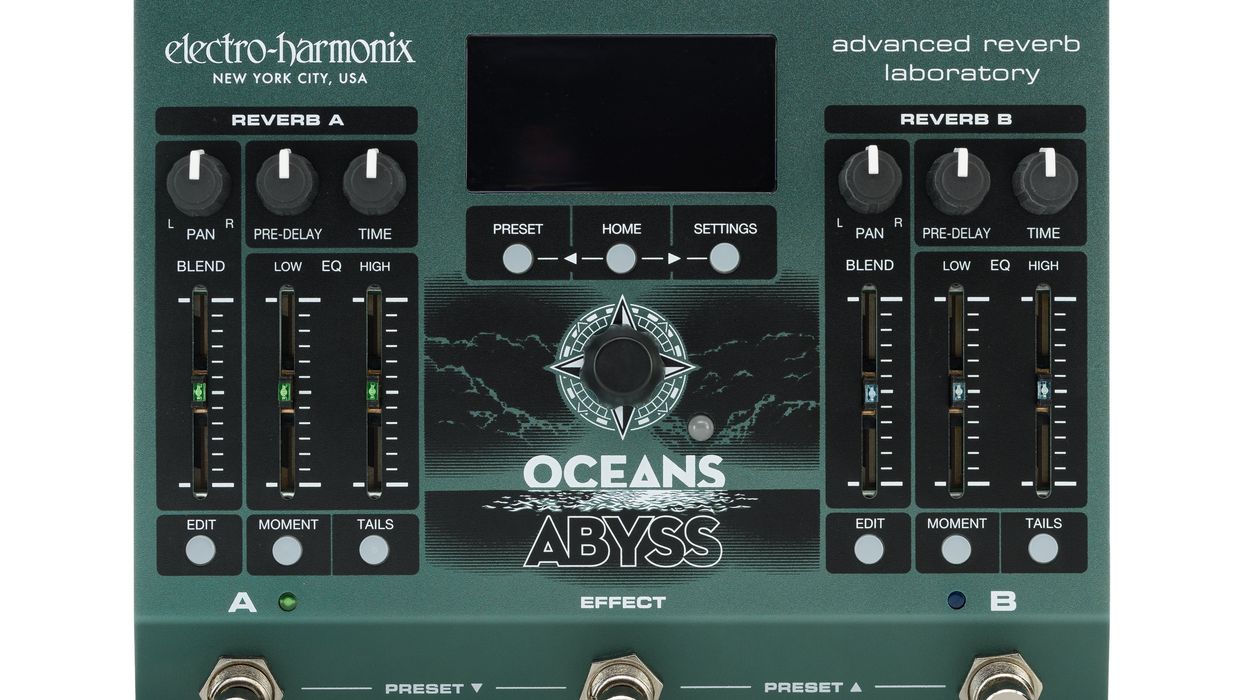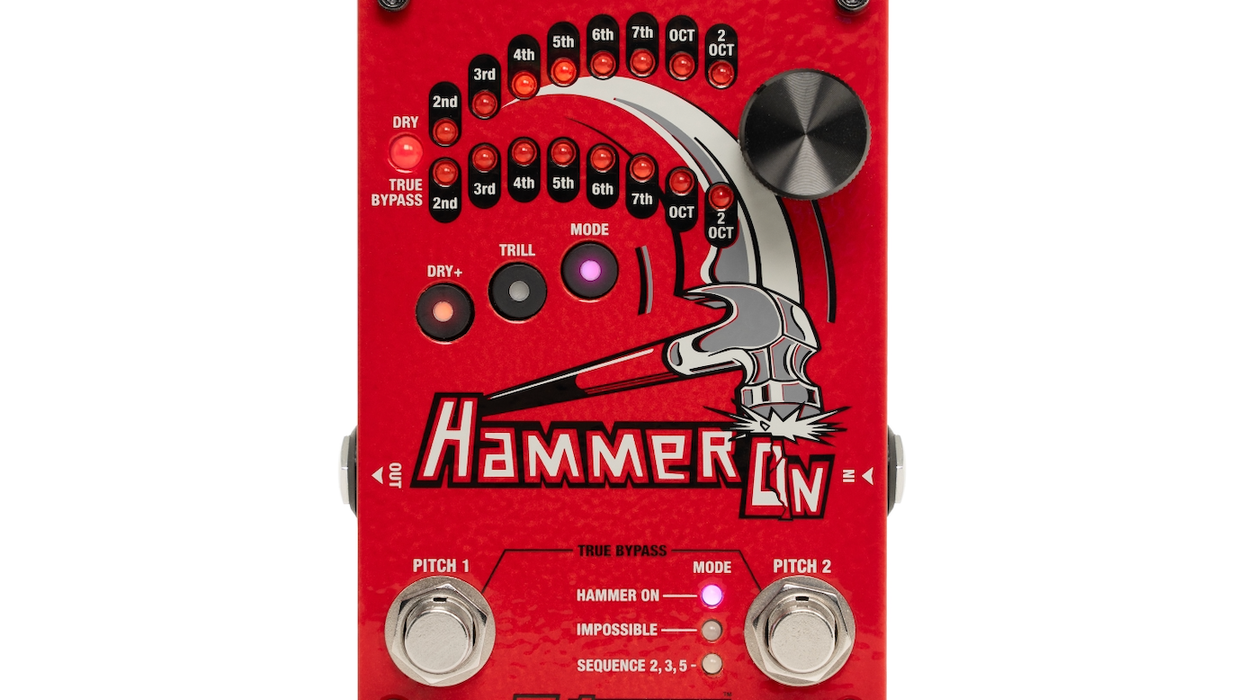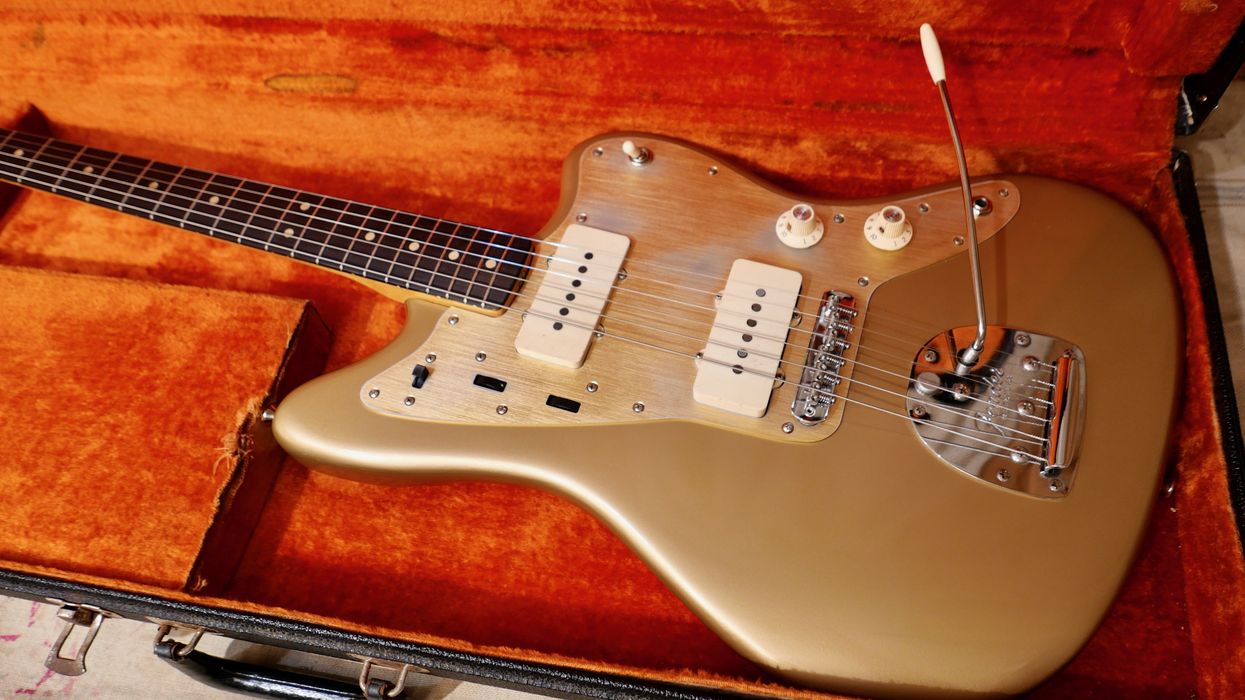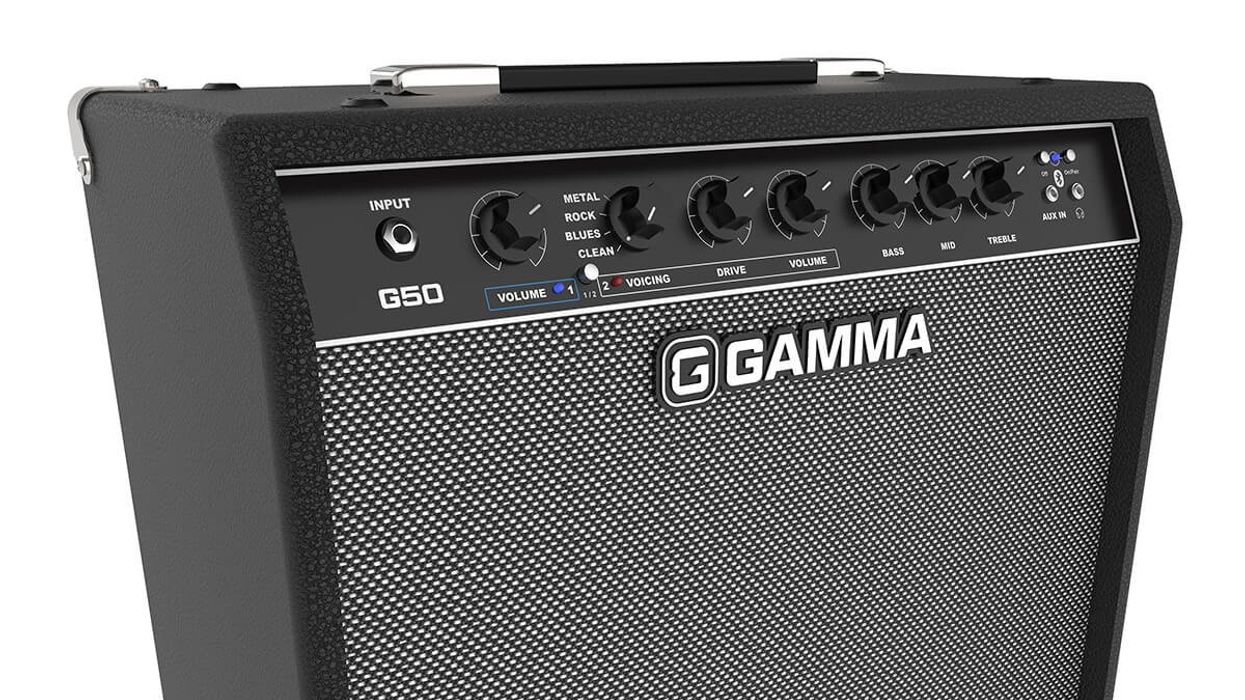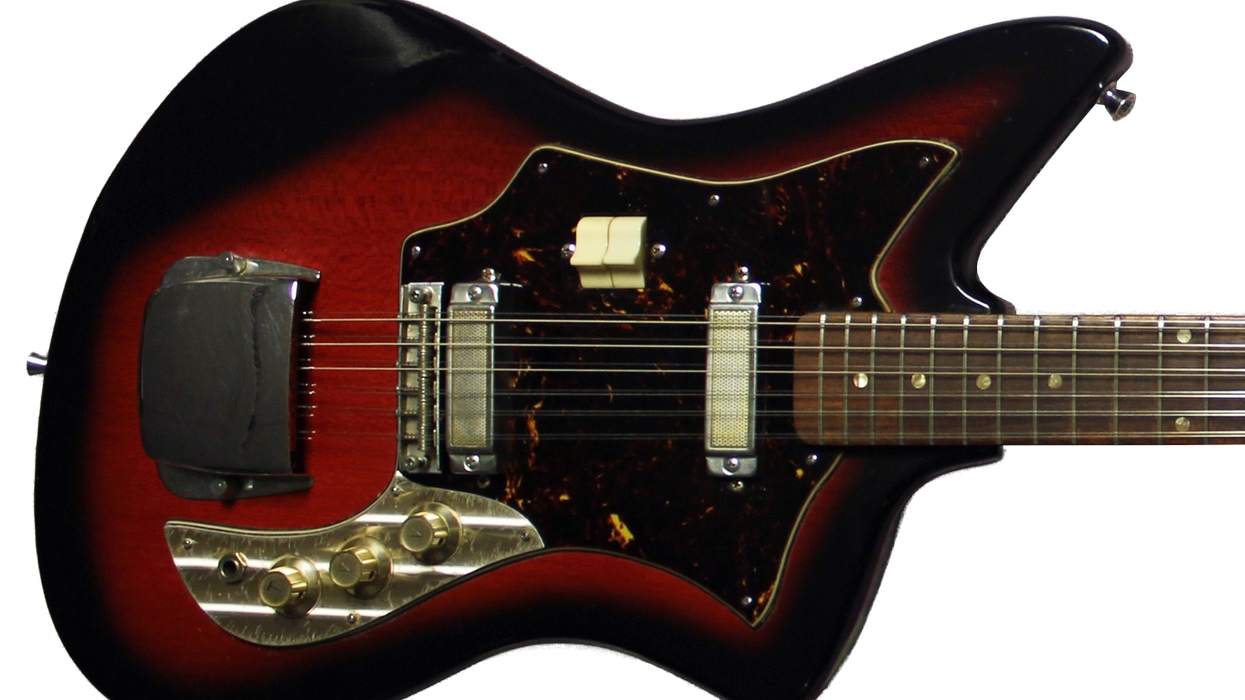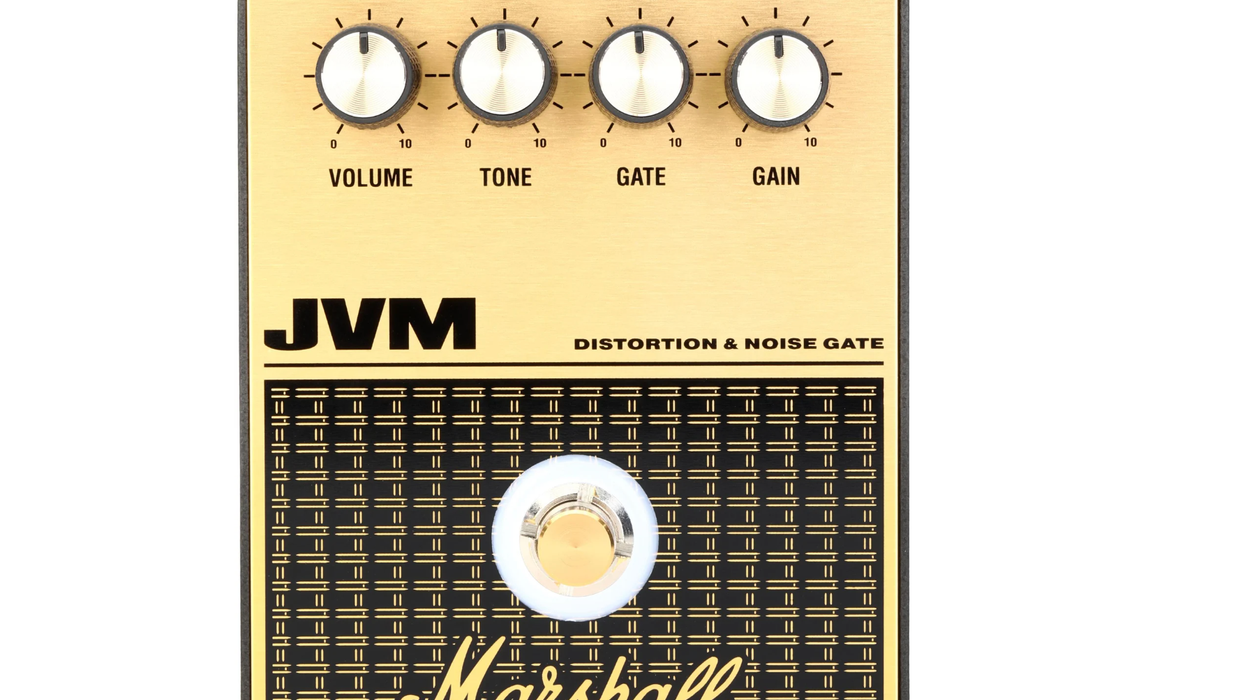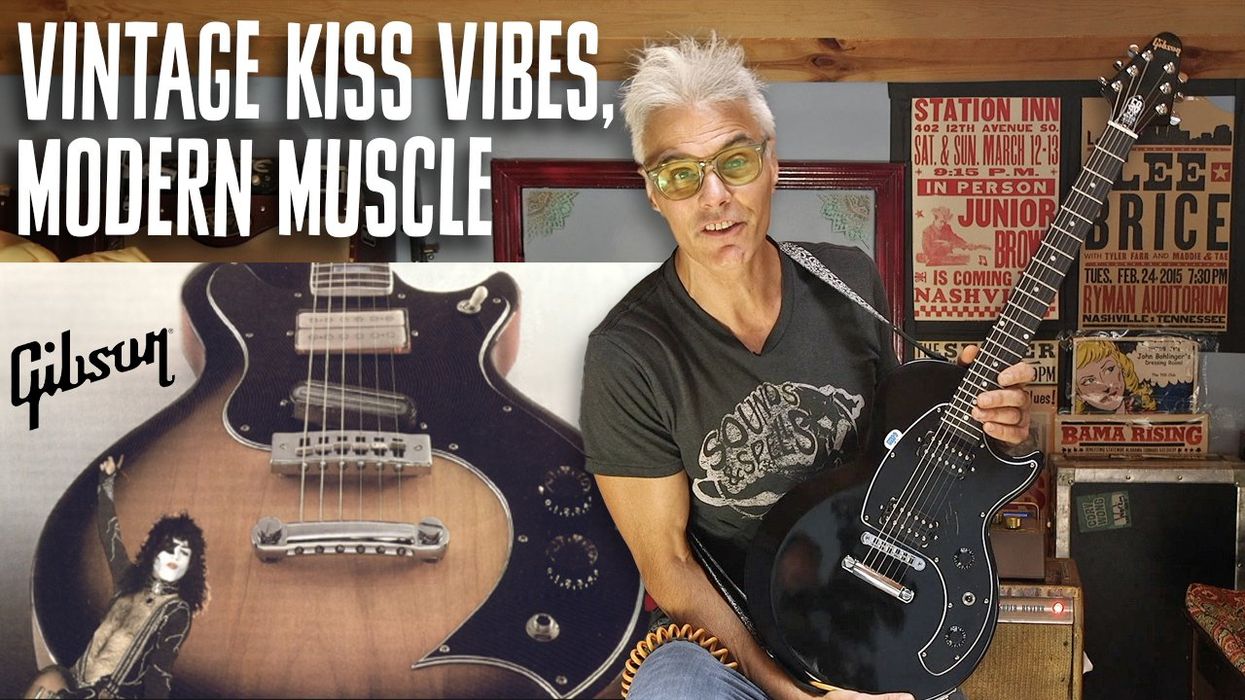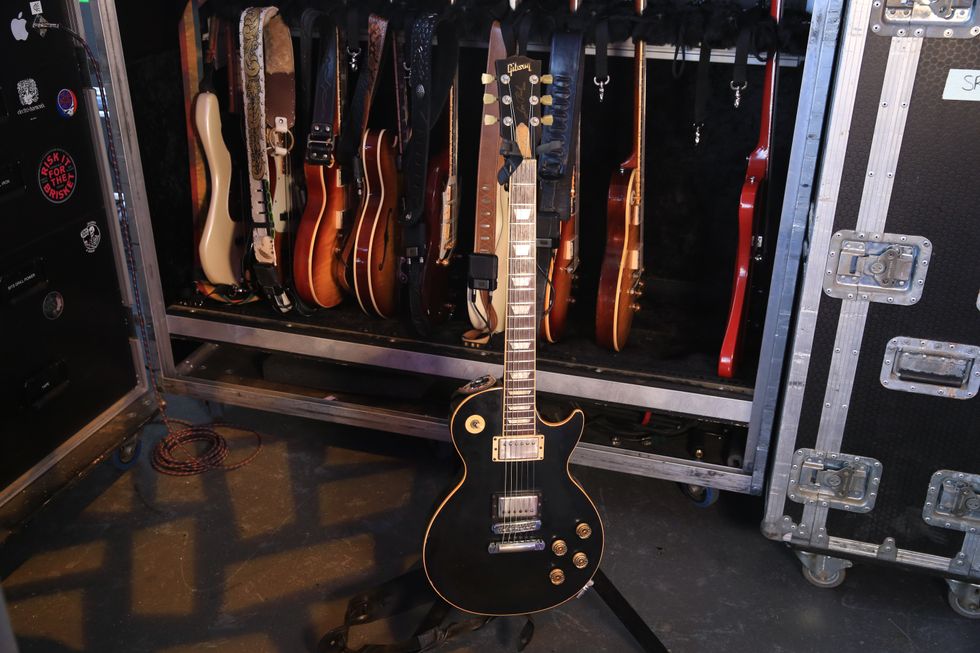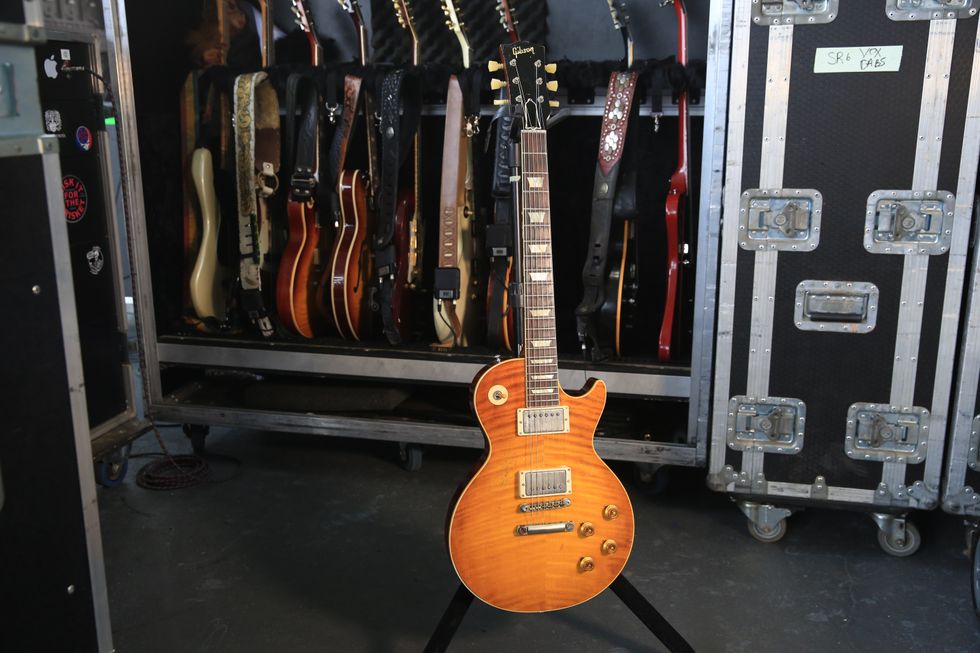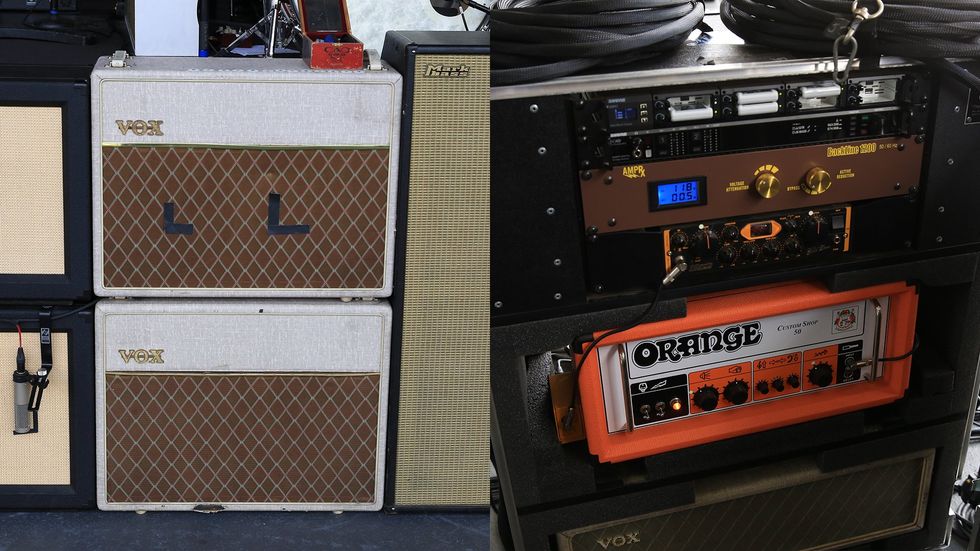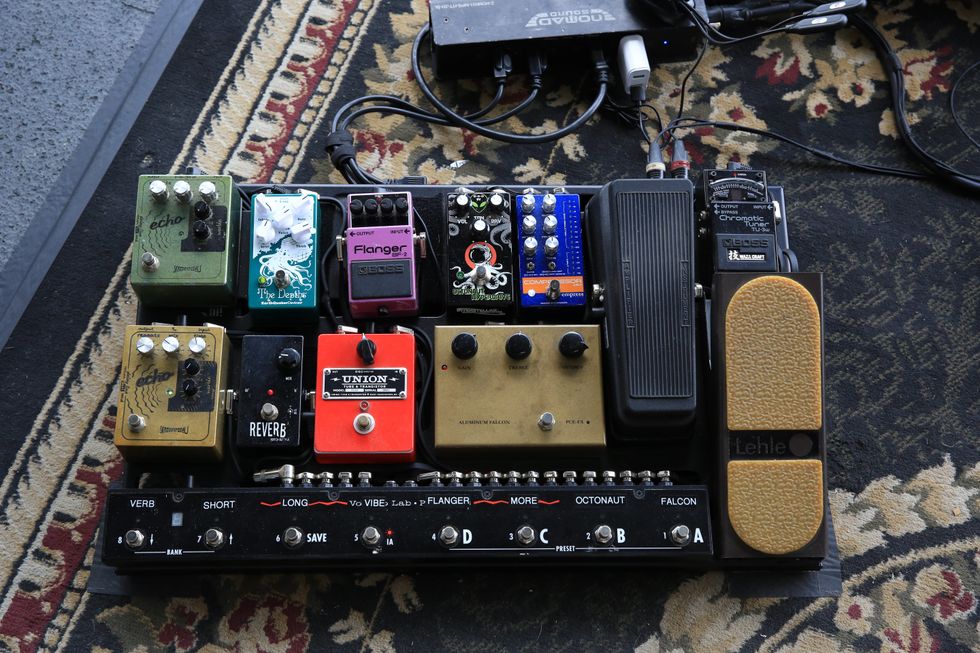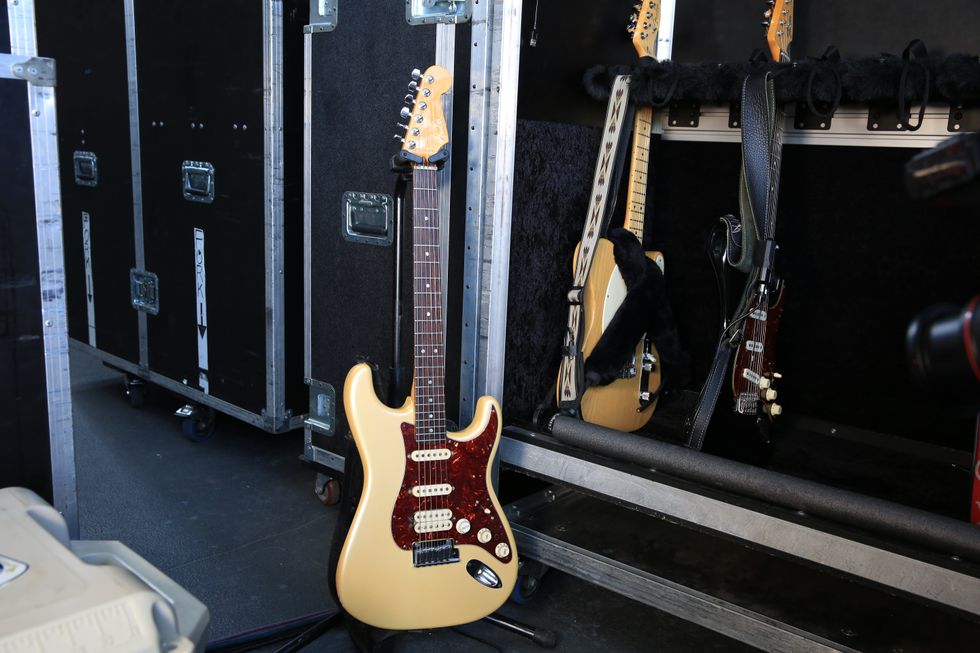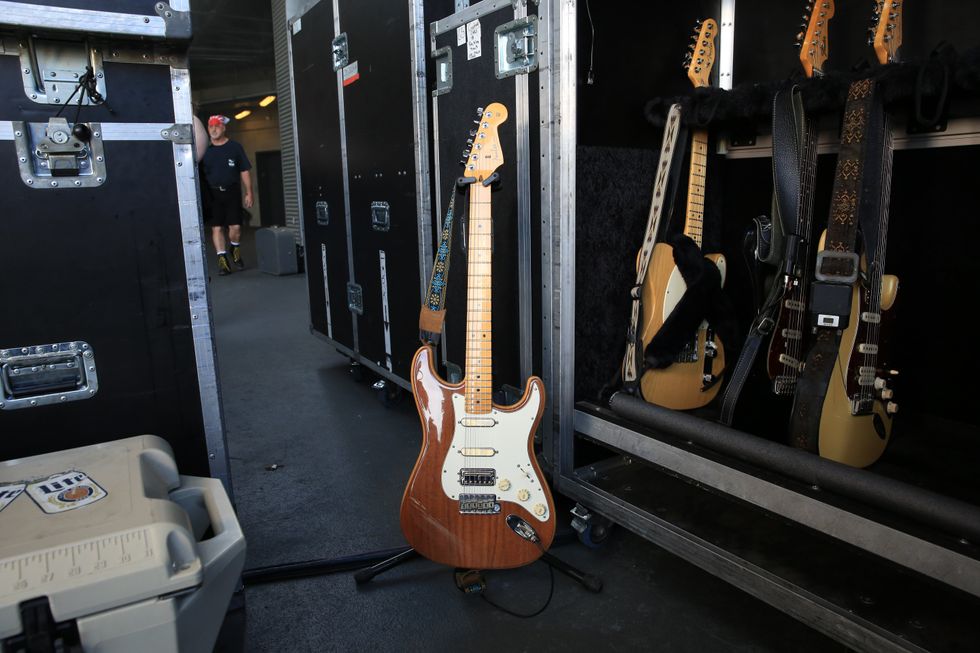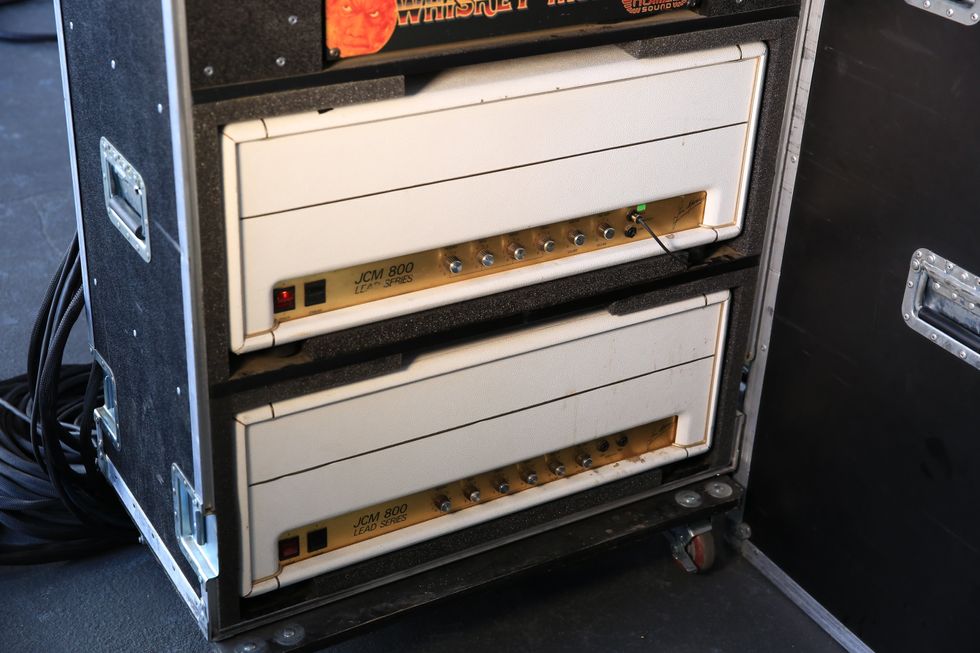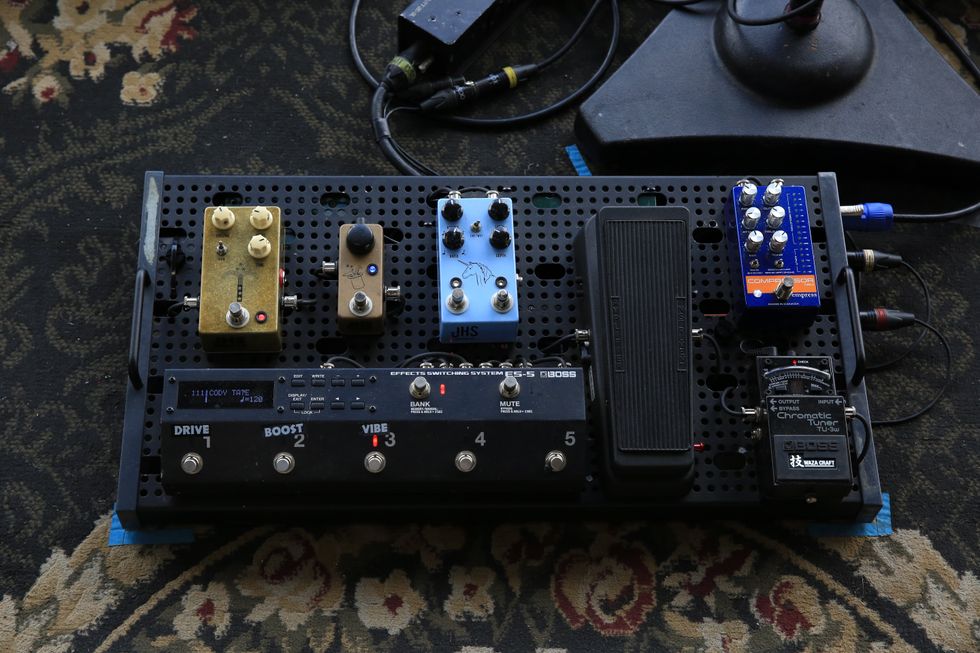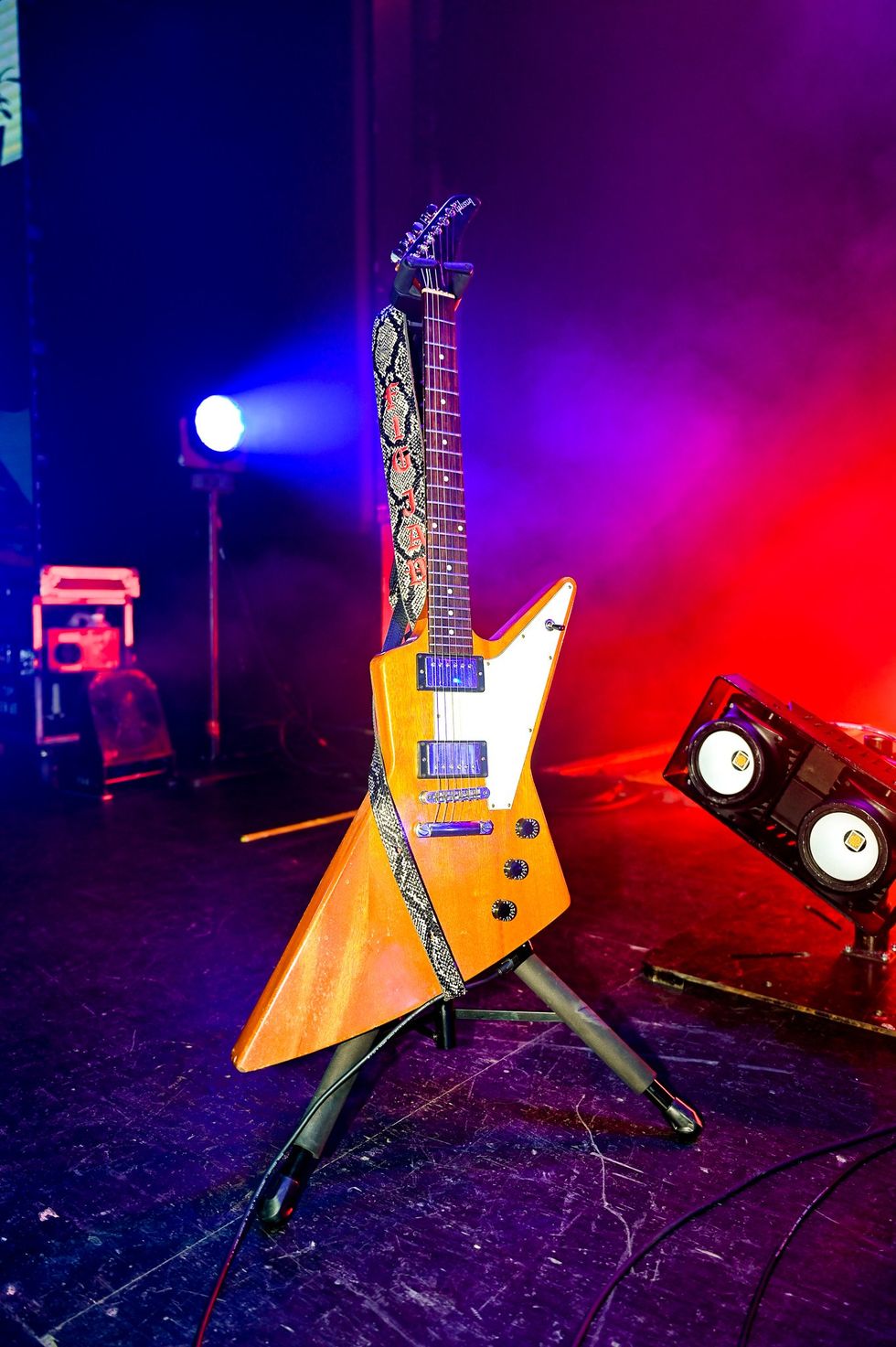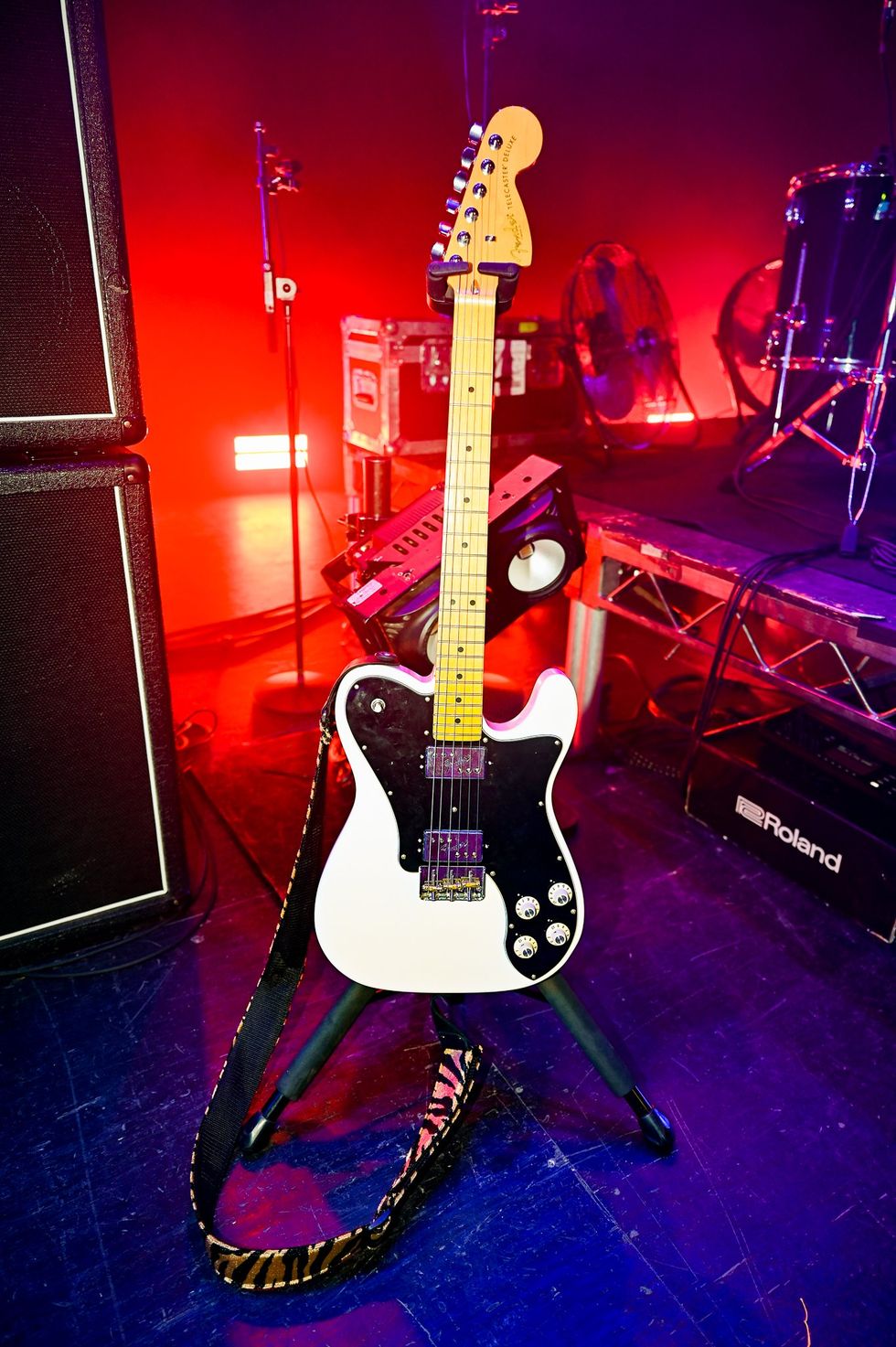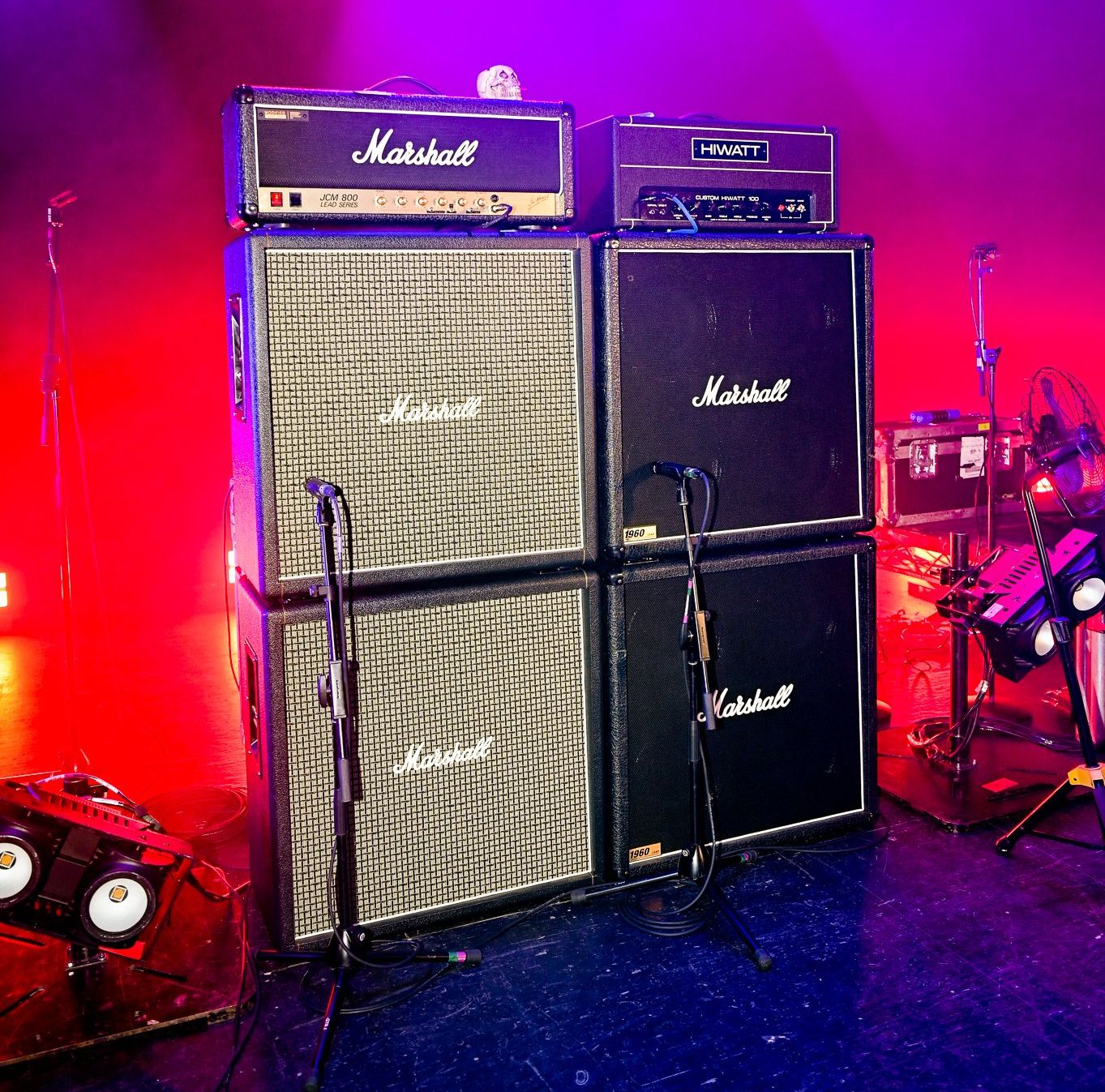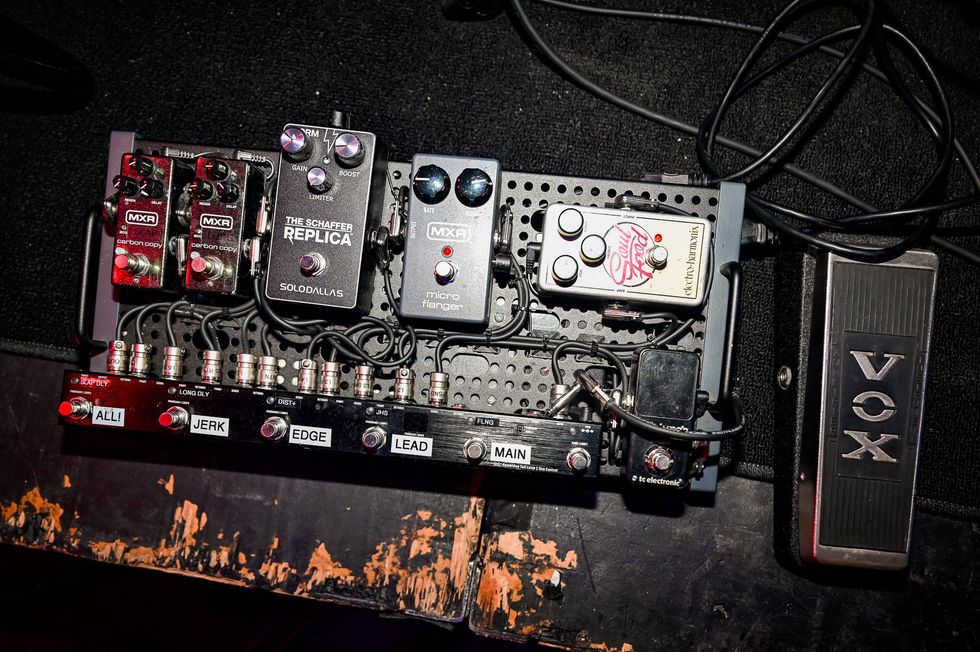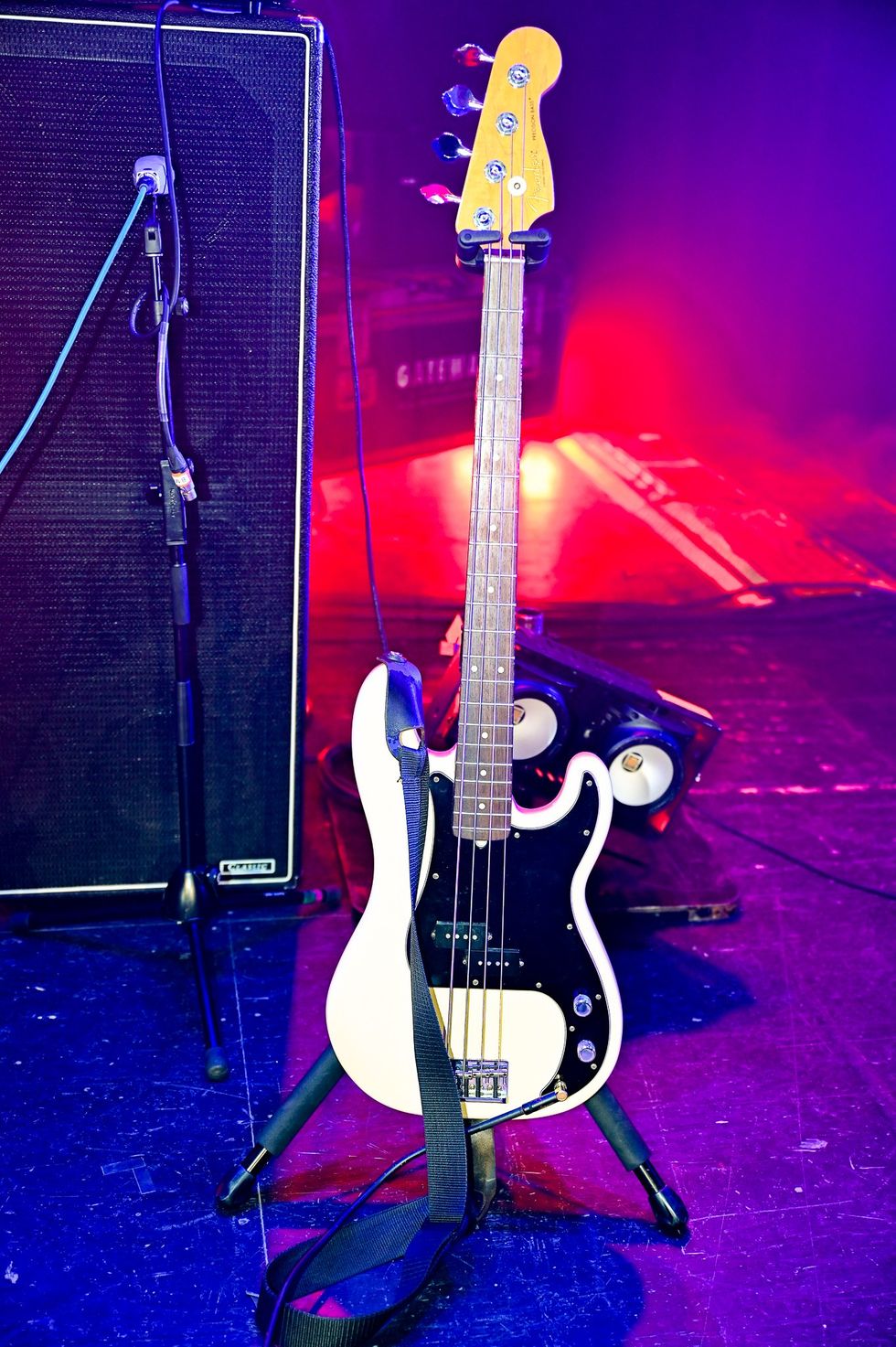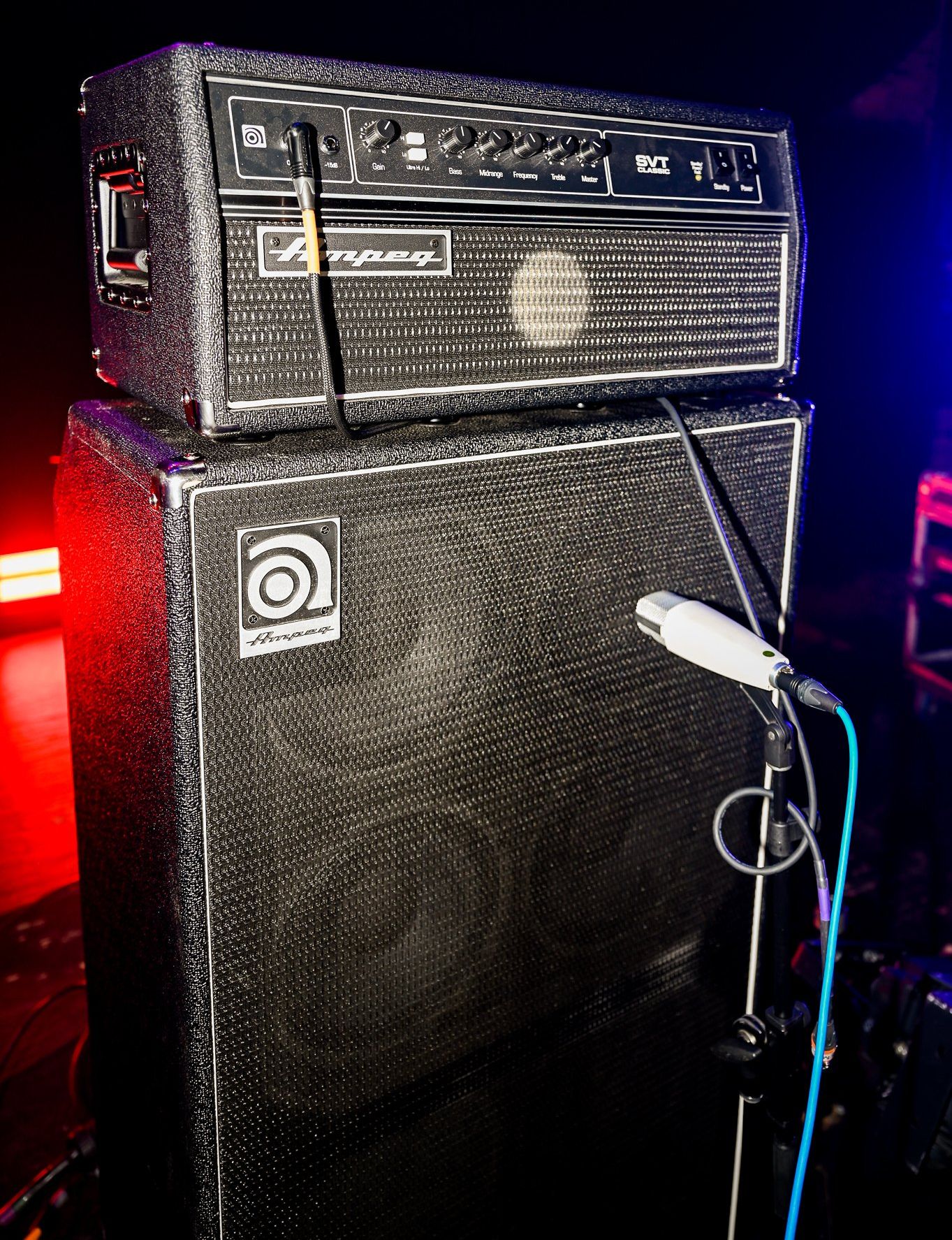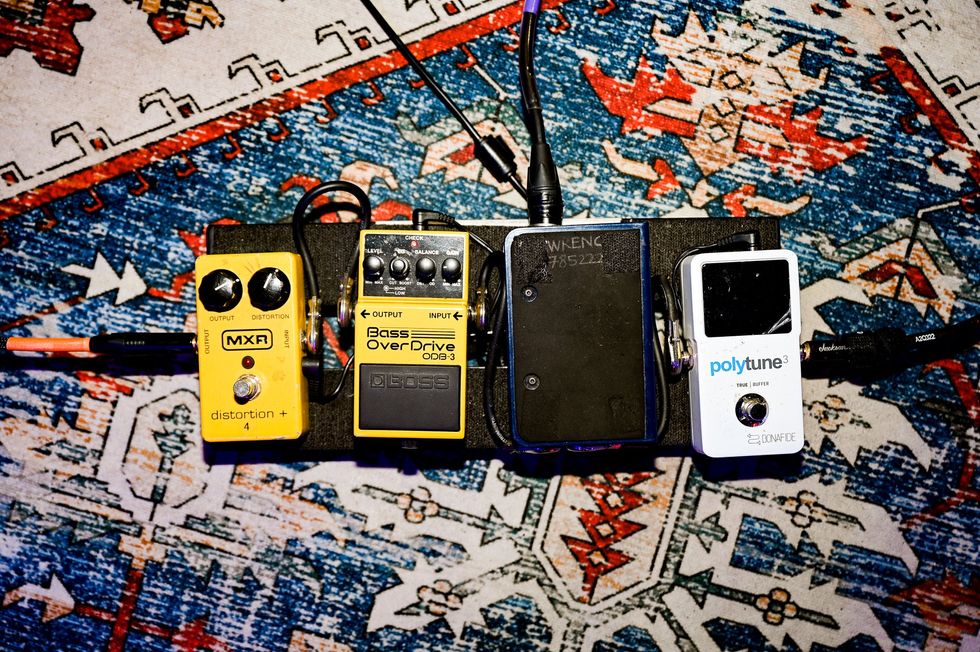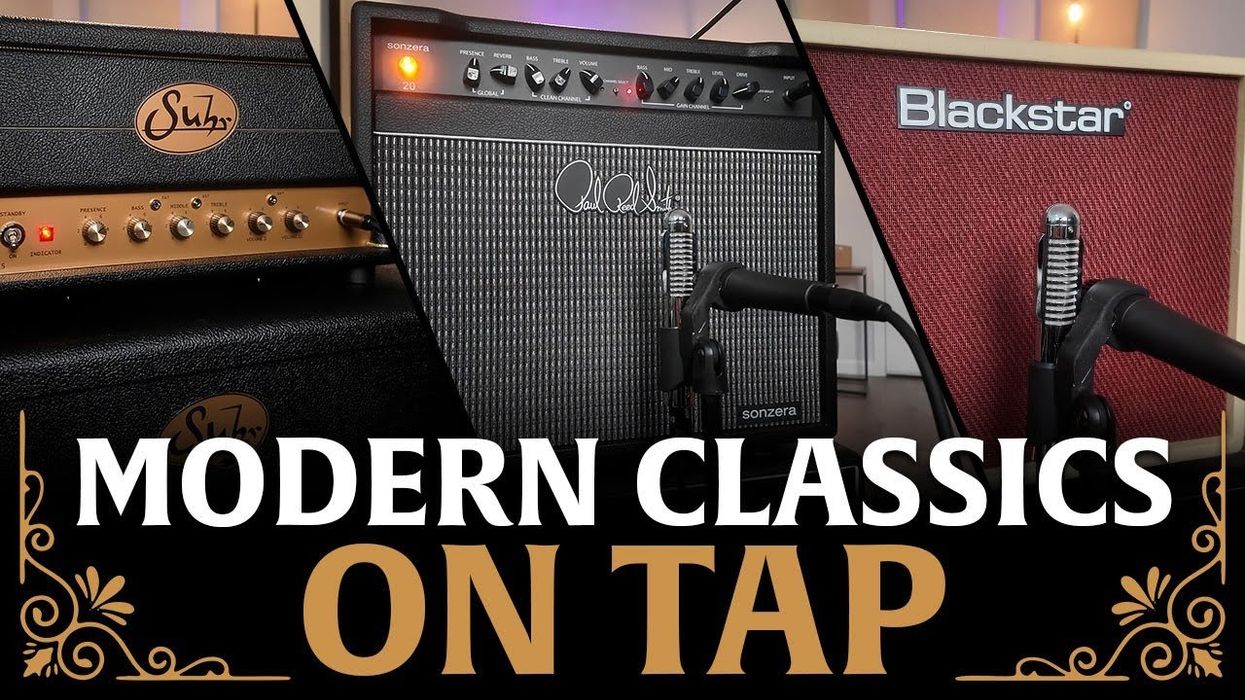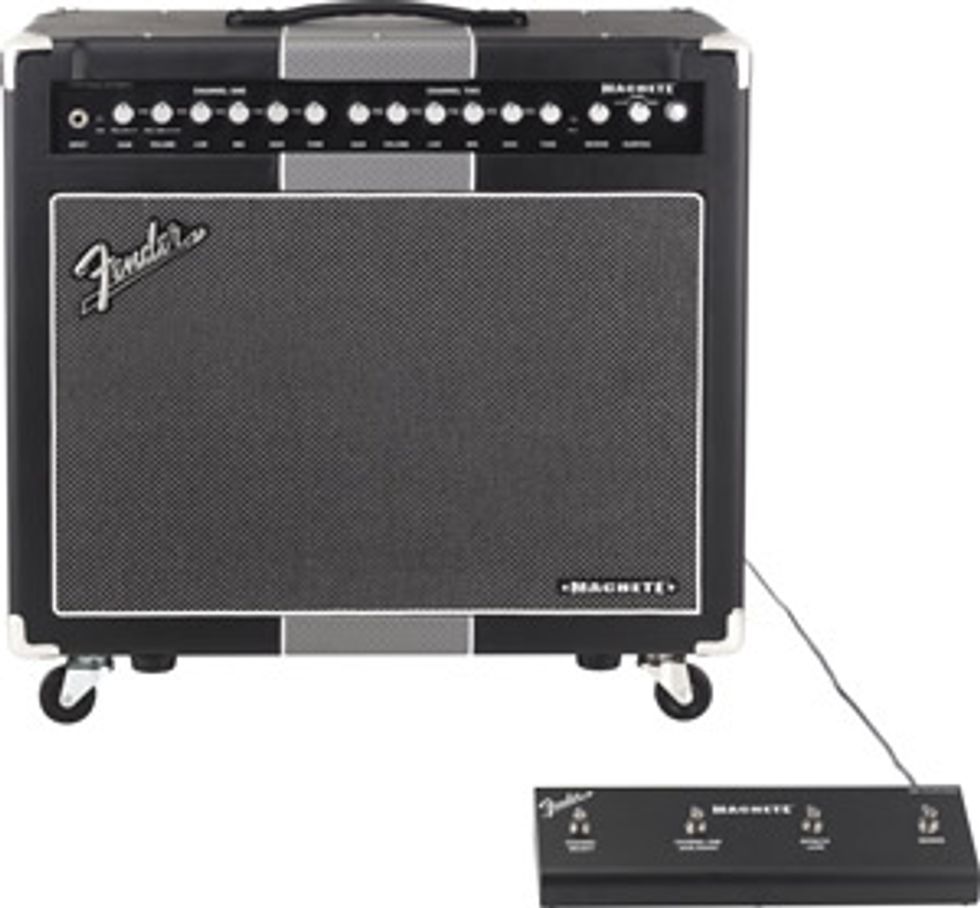
For players used to really big sounds, compact high-gain tube combo amps sometimes seem to demand too many tradeoffs to make the convenience and portability worth it. If you’re used to pushing air with a 4X12, the relative lack of clarity and punch at high volumes and low headroom that you get from a 1X12 can feeling like you’re missing an arm—even if it’s still really dang loud.
With the Machete—Fender's newest addition to their Pro Tube series of amps—the aim is dish blisteringly aggressive tones from a 50 watt, dual-channel combo without sacrificing the range players get from big cabinets. And Fender achieves a lot of this versatility by making it one of the most tunable amps the company has ever built.
Bullitt-Head
The Machete is styled like a ’60s muscle car, with a sleek, black vinyl covering and a grey vinyl racing stripe that looks like it was fashioned from a steering wheel grip. 50 watts of dual-6L6GC power are pumped through a single 12” Celestion Vintage 30 speaker, which is mounted in the combo’s semi-open back cabinet. Instead of using a back panel that extends halfway down the back of the cabinet, Fender opted for a gap that’s only about four inches tall, which seems to serve primarily as ventilation for the amp’s dual power tubes. The preamp is driven via five 12AX7 tubes and a 12AT7 that works as a phase splitter to keep the preamp’s signal tight and focused.
The Machete’s two channels each have dedicated three-band EQ, preamp gain, master volume, and Notch controls. The Notch control is designed to sweep through a wide spectrum of midrange settings, enabling you to more precisely tune the amp to the guitar that you’re using. For example, if you’d like to add a little more raunch and midrange presence to your single-coil equipped guitar, moving the Notch knob up will get you there. Guitars with heavy natural mids like a humbucker-equipped Les Paul can be made sharper and crisper with a less aggressive notch setting.
The Clean channel’s preamp gain and volume controls double as Pull Bright and Pull Gain Boost features respectively. And players who use active pickups can breathe a sigh of relief with the amp’s 6db input attenuation switch, which helps keep the signal clearer for low impedance signals. The digital reverb is controlled by a single control for both channels. Finally, a control for setting the level of speaker damping sits near the end of the panel, and it’s one of the real keys to the Machete’s performance—making the amp feel and sound tighter and punchier, or more loose and harmonically driven depending on how you set it up.
The Machete's features don't end on the front panel. There's an effects loop with individual send and return level controls on the back panel, which can also be set as a switchable lead boost by connecting both the jacks together with a patch cable—adding up to 12db of gain when engaged. Pressing the PA Mute switch disables the tube power amp output completely, giving the player the option of using their favorite power amp if they choose to. There's also an XLR line out jack, which enables you to run the Machete directly into a mixing console, along with cabinet emulation via a small switch next to the jack. The amp can also be controlled via MIDI, and there’s a four-button footswitch for channel switching and engaging the boost on channel one, effects loop, and reverb.
Top Gear
To put it succinctly, the Machete isn't the type of Fender amp most Fender-philes will expect. It has a great clean channel, no surprise give its family heritage. But the overdrive capabilities are about as far from the sparkly, low gain, super-clear snap that put the Bassman and Twin Reverb on the map. The Machete really enjoys living on the edge of thick, molten gain and meaty, defined grit.
Clean things first, though. The clean channel’s tone is clear, even and not a bit over-compressed. At its essence the voice is akin to a Twin Reverb with more midrange presence and a softer attack. But you can get a lot of range out of the super-sensitive controls, and even the slightest movements of each of the EQ knobs had a rather substantial effect on the tone. A Gibson SG’s neck pickup initially sounded way too bassy, but one slight adjustment of the Bass control was all it took to tame it. Most amps in my experience would have taken a much more dramatic adjustment.
When I felt like the tone wasn’t as cutting as I liked, careful adjustment of the channel's Notch control let me set the midrange curve with ease. The amp's Damping control, also came in handy when I wanted to add or subtract presence in the high end. Moving it towards Loose gave the highs more bite and lent some sag in the mids, and further adjustments towards Tight dulled the high end and tightened up the lows.
Lest you have any doubts about the amp's onboard digital reverb ( or questions about why Fender would forgo one of their most famous trademarks—deep and rich spring reverberation—for a digital replication) the reverb is spectacular, with a very wide, expansive and all-encompassing if you need it that way. It will fill the room for atmospheric tunes like Radiohead's "Subterranean Homesick Alien” with the control set at just 10 o'clock and beyond that you can get into deep space realms that are great for Adrian Belew’s volume swells on King Crimson's "Matte Kudasai".
Ratings
Pros:
Super-smooth voicing. Sensitive controls. Great reverb.
Cons:
Expensive.
Tones:
Ease of Use:
Build:
Value:
Street:
$1,900
Company
fender.com
The Machete's second channel is what really sets it apart from the rest of Fender's amp line. The near-fire-breathing, muscular gain is a real surprise, and there's more than enough gain on this amp to satisfy the most demanding metalheads. I never really needed to move the Gain control past 11 o'clock for stuff as heavy as Alice in Chains riffs. Gain settings higher than three o'clock give the distortion an almost a square-wave, fuzzy quality that’s perfect for smooth and aggressive Santana-style lines. The tightest and most focused high-gain sounds come from keeping the control below the 12 o’clock setting. This is most definitely not an amp for a kid that expects bone-crushing metal rhythms from diming the gain.
Channel Two also is much more sensitive than Channel One to adjustments of the amp's Tuning control—an indispensable tool for getting different tones without having to touch any of the other controls. After setting all of the EQ controls and Notch control at noon, the Gain at 10:30 and dropping the Mid knob slightly, I had a killer hard rock rhythm tone to build upon. But moving the Tuning knob closer to Loose added much more bite and snarl to the high end while loosening up the lows and mids—effectively browning the sound. Turning the control the other direction tightened up the tone, though I needed to add a little high end via the EQ section in this instance. The sound and feel are not the same as the high-end bump you get from a looser speaker setting. But finding the right balance between speaker tuning and EQ will really help open up your guitar’s voice.
The Verdict
Fender's sleek 1x12 Machete combo has a lot to offer players who need to move between crystal cleans and bristling gain and favor a more modern voice in general. The Tuning and Notch controls make the amplifier a much more sensitive and versatile machine. And while the amp can go completely over the top with its overdrive, it’s smooth, harmonically rich, and big at moderate settings. And given that all this comes in a beautifully built and killer-looking combo that you can get in the trunk of your car, this is an amp that is arguably much, much more than the sum of its parts.
Watch our video review:






